MARKETING
How To Make LinkedIn Your Top B2B Social Media Platform
Eight in 10 B2B marketers use LinkedIn to market their brand. Of that group, 40% say it is their No. 1 platform.
In the next year, 54% of marketers say they plan to up their organic activity on LinkedIn according to the 2022 Social Media Marketing Industry Report from Social Media Examiner (gated). Forty-three percent use LinkedIn as a lead generator, while over one-third buy LinkedIn ads.
8 in 10 #B2B marketers use @LinkedIn to market their brand. 40% say it’s their No. 1 platform according to @SMExaminer via Aleksandra Iakovleva of @VistaCreate @CMIContent. Click To Tweet
That’s a lot of activity happening on LinkedIn. Of course, that doesn’t mean all that activity delivers what you want to achieve. It takes more than an on-site presence to use LinkedIn successfully. It’s about optimizing your brand’s presence and developing quality paid and organic content.
These tips can help you do just that – and I’ve added some inspiration from four companies already making the most of their LinkedIn presence.
Optimizing isn’t just for traditional search
Your company has a presence on LinkedIn, but is it making the most of that existence? These five tips can ensure that you do.
1. Do SEO
Including keywords related to your business can help your targeted audience using LinkedIn’s search feature to discover your page.
Incorporate the most relevant in your page’s headline, tagline, and summary. Add more keywords to your posts. Make sure not to overdo it — repeating keywords over and over isn’t a good practice for traditional search, and it isn’t smart for LinkedIn search either. Instead, use keywords sparingly so that they fit seamlessly into your content.
2. Customize your URL
You don’t have to keep the random numbers and letters that LinkedIn used to generate your page URL. You can alter your URL to align with your business.
This URL – https://www.linkedin.com/98kdf8Vlio49/446JpwWx – was altered to make it look like this: https://www.linkedin.com/company/vistacreateofficial.
One is nonsense; one perfectly represents our brand name.
To change your URL, go to the business page:
- In the left sidebar, select Edit Page, then click on page info.
- Under the header LinkedIn public URL, you can change the suffix of your URL in the text box.
- Click save at the top of the box.
Now, you can help visitors clearly see the brand in the URL, as well as improve brand awareness when promoting the page link.
Don’t let your brand’s @LinkedIn URL stay a jumble of letters and numbers. Change it to incorporate your brand name, says Aleksandra Iakovleva of @VistaCreate via @CMIContent. Click To Tweet
3. Add external links
Whether your goal with LinkedIn is to generate leads, make sales, or increase your brand awareness, you want to drive traffic to your external pages. The best way to do that is to include external links to your business’ portfolio and a direct link to your website in your profile.
4. Implement a coherent design
A brand design is vital when it comes to recognition. In fact, even having a signature color can result in an increase in brand recognition. Your brand should have an instantly recognizable logo, color scheme, and text type. Your LinkedIn page should be no different.
On LinkedIn, you have both a profile picture and a banner image. Make sure you fit your brand’s visual identity and communicate immediately what your audience can expect as they are the first things they see when they click on your page. Don’t shy away from tapping into current design trends to make your LinkedIn page and posts look more modern. When a post is visually appealing, it inevitably gets more attention and engagement.
5. Listen to the data
Luckily, LinkedIn has the next best thing to reading people’s minds with its incredible analytics system.
You can track a number of important metrics – total page views, clicks from unique visitors, and frequency of clicks on external links.
It also allows you to compare your results with your competitors to see how you measure up, in addition to giving a full breakdown of your lead generation analytics.
By studying the data, you can figure out which features of your page are and aren’t working. You can then tailor each aspect of your page as appropriate.
Investing in paid content on LinkedIn
LinkedIn paid content opportunities are varied and useful. They include sponsored content, sponsored messages, text ads, and dynamic ads. Let’s walk through each one.
1. Sponsored content
Pay to promote a piece of your posted content to expand your reach. It will show up as “promoted” content on the home page of LinkedIn users targeted by your brand. Sponsored content can be text only, incorporate an image, video, or carousel, or be an event.
2. Sponsored messages
While sponsored content appears in the news feed, sponsored messages are delivered directly to the LinkedIn user’s inbox. This feature lets you target individual consumers with a personalized message.
This seems like a slam dunk of an opportunity, right? But interestingly, according to LinkedIn, while 89% of consumers say they would like to use messaging with businesses, only 48% of businesses use this tactic to engage with their audience.
Most consumers say they would like businesses to use messaging, but less than half of brands do it, says Aleksandra Iakovleva of @VistaCreate via @CMIContent. Click To Tweet
3. Text ads
If you go onto your LinkedIn home page, you can see in the top right corner a little box titled “Promoted” with three small ads. Each one has a headline above less than two lines of text.
These LinkedIn text ads are short and snappy. You can target an audience using broad factors such as location all the way down to detailed criteria such as job titles.
For a bit more info on text ads, check out this resource from LinkedIn.
4. Dynamic ads
Dynamic ads are an amazing resource. Essentially, each ad is tailored to the viewer based on their LinkedIn profile data – profile photos, company names, job titles, etc.
Dynamic ads perfectly blend wide outreach with tailored individual ads. That is a win-win in my book.
Finding inspiration
Let’s look at how some brands use LinkedIn in strategic and effective ways.
1. Post content that resonates
You’ve got to make sure your posted content is packed full of value. Tell stories, demonstrate how your business can help, express your opinion on an industry topic, and explain statistics you’ve noted. In short, create content that your audience wants to read.
This post from dairy-free milk provider Oatly focuses on its European audience, explaining how cow-based milk affects school children in part because of their emission of carbon dioxide. It outlines the European Commission’s willingness to hear about plant-based alternatives. The call to action includes a link to a petition, a link to learn more, and a link to the sources cited in the post.
This post also incorporates both text and video and clearly outlines the brand’s position.
2. Use an authentic voice
People buy from companies they trust. Make sure your posts are created with that trust-building in mind.
Giving your business an authentic voice means that your business will come across as a real living and breathing organization that has a sense of humanity rather than a cold, hard, and bland corporation.
Innocent Drinks, a UK-based smoothie maker, lets its personality shine through in this LinkedIn post about its Beacon Project. Here’s the opening paragraph:
Last week was World Bee Day. We couldn’t bee-lieve it either. Sorry. We know we probably should have posted about it last week on the actual day, but we’ve just been such busy bees. Not sorry for that one, it’s a corker. With that in mind, we wanted to share some exciting news about the Beacon Project. It’s our three-year campaign to test how different ways of farming can promote wild pollinators and make the fruit trees even more fruitful and resilient to climate change.
That’s a lot of bee-related puns, which indicates the voice of Innocent Drinks is filled with humor and is bold and expressive.
3. Use hashtags properly
Hashtags are still a powerful tool on LinkedIn. They can be used to add a bit of emphasis to your posts, but they’re also a key tool for branching out to new audiences and improving your discoverability.
But hashtags should be used sparingly and specifically. It’s best to keep hashtags to fewer than five in the body or bottom of the post.
In this post from L’Oréal about living wages, the personal care company incorporates two relevant hashtags into the text – #LivingWage and #HumanRights. Anyone who enters the hashtag will most likely find L’Oréal’s post. That can increase their brand awareness and show them as a company that cares about sensitive issues.
4. Make it multimedia
When creating a post, you could just write text. But why waste the opportunity to mix the media? You can add photos and videos, share an event, or even engage with your audience through polls.
Using media in your LinkedIn posts helps get eyes on your content. In fact, according to LinkedIn, posts that contain an image can result in up to 98% more comments. So you could be cutting engagement simply by not incorporating a visual element in your post.
Take this post from UK-based plant-based food company THIS. The crisp cold beer next to the deep red of the burger instantly catches your eye (and your stomach). Paired with the hand sticking out of the beer to make the “I” in “THIS” you’ve got yourself an absolute winner of an image with little explanatory text needed.
HANDPICKED RELATED CONTENT:
One more LinkedIn success ingredient
You’ve optimized your page and followed best practices in creating the content. But there’s one important factor to address – how frequently should you publish that quality, relevant, and optimized content.
LinkedIn has one of the longest content lifespans of all the social media platforms, with each post expected to stay on a person’s page for around 24 hours — that’s 18 hours longer than Facebook.
So instead of concentrating on constantly posting content, concentrate on posting content consistently. Pick a schedule that works for you and stick to it.
It allows your audience to reliably trust that your content will come through without constantly being bombarded. And as you know, that trust from your audience is the best and most far-reaching outcome of your LinkedIn content.
HANDPICKED RELATED CONTENT:
Cover image by Joseph Kalinowski/Content Marketing Institute

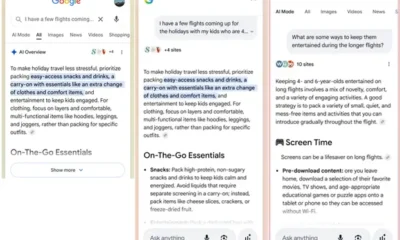

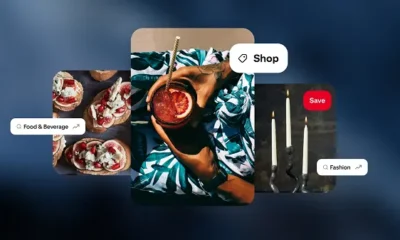

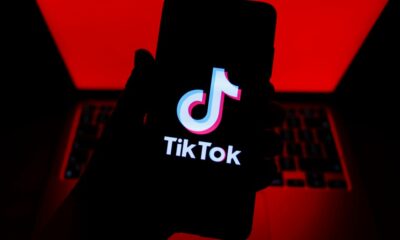





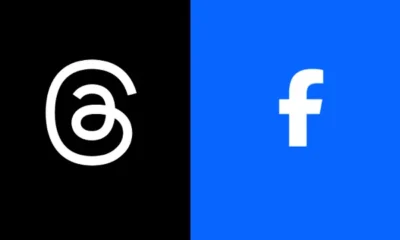





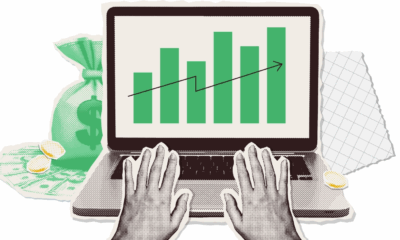

You must be logged in to post a comment Login